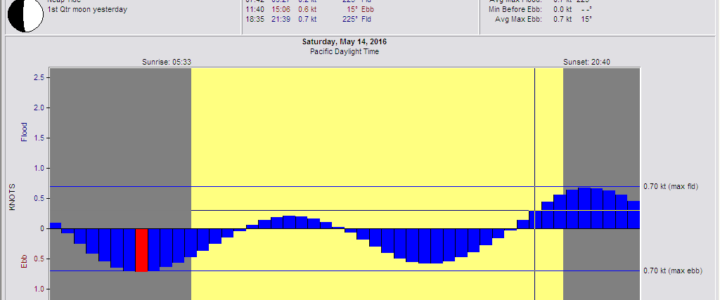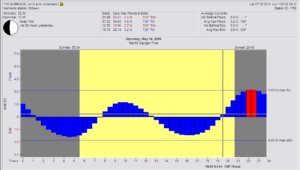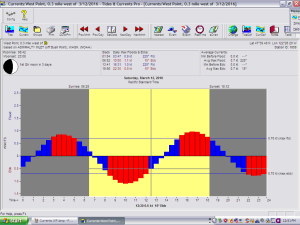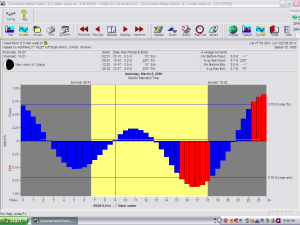Bruce Hedrick usually posts for a specific sailboat race. This week we’re lucky to have an overview for the sailish, er, Salish sea. He’s watching closely in anticipation for Swiftsure and, later, Vic-Maui. Take him up on his offer to answer questions, he loves it. Just post at the bottom of this post under comments, and we’ll get him to answer you! – Ed.
It has been yet another very interesting week for weather in the Pacific Northwest with gorgeous sunshine ( in places), snow in the Olympics and Cascades , and heavy rain (in places). In other words, pretty typical springtime weather.
Looking at the surface charts one feature that really came to light this week was the setting up of the Pacific High which certainly should have the Vic-Maui and Pacific Cup teams licking their chops. Running the numbers for a start today, the Vic-Maui big boats could well have set a new elapsed time record. The same would be true for the Pacific Cup. For a brief period the High got up to 1038 millibars and was very round. Those two features tend to indicate the onset of some stability for the high. The bad news; it’s pretty early for that and there’s a lot of time before the start of either race. It definitely bears watching.

The weather for this weekend shows that we still have a weak but persistent low pressure system just sort meandering over the Northwest. This will tend to result in a mixed bag of conditions. For the central Sound on Saturday it looks like a perfect day for sailing with 10-15 knots of southerly for most of the day. What the Vashon Island racers wouldn’t have given for that last weekend! Swiftsure racers should be watching the weather in the Straits and note a fairly typical pattern of light air in the morning and a very breezy afternoon and evening with 25-30 knots from the west. Plan accordingly and at least be thinking about how you would deal with that on your boat. The long range forecast doesn’t look like that much wind for Memorial Day however it’s still a long ways out for any kind of accuracy.
Sunday shows yet another day of consistent southerlies in the Sound and a slightly weaker westerly filling down the Straits by late afternoon/early evening. Showers will be around so don’t leave the foulies at home and as always, keeps a weather eye out at all times.
Also, if you have any questions feel free to send them in and I’ll try to answer them.
Have a great weekend.
Bruce has raced and cruised the Pacific Northwest his entire life. He earned a Bachelor’s of Science from the University of Washington in Biological Oceanography and learned meteorology “to keep from getting kicked around on the race course.” Bruce spent nearly two decades as Associate Publisher for Northwest Yachting Magazine, retiring in mid-2015, and was the chairman of the board of trustees for the Northwest Marine Trade Association in 2014. (photo of Bruce driving Playstation is a bit dated, but cool)








































































 The tide will be at near max ebb in the starting area so don’t get caught below the line trying to beat back up with a tide trying to push you to north and your entire fleet reaching over the top of you giving you a massive dose of dirty air.
The tide will be at near max ebb in the starting area so don’t get caught below the line trying to beat back up with a tide trying to push you to north and your entire fleet reaching over the top of you giving you a massive dose of dirty air.























